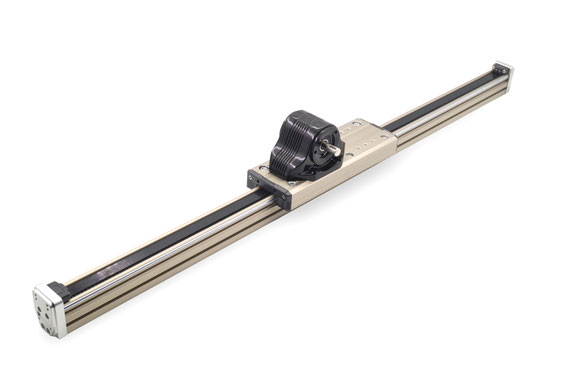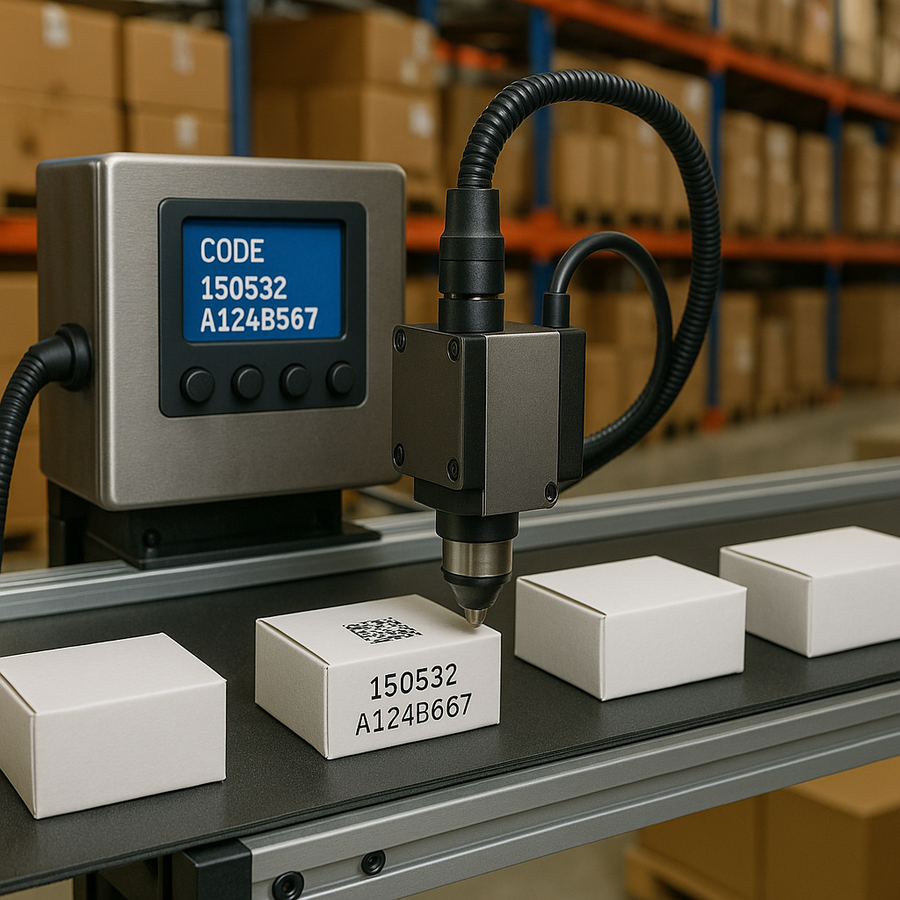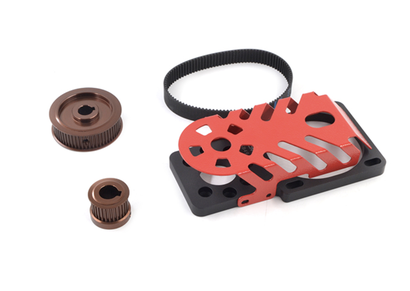CCM Z50-30 Linear guide rail with motor on carriage for coding machines

Looking for the Right Linear Guide Rail for Your Application?
We understand how overwhelming it can be to choose the right linear guide rail when so many options online look similar and claim high performance. That’s why we’ve made it simple for you.
You have two clear options:
1. Stay here and check the technical specifications of our precision-engineered linear guide rail modules.
or check
2. How to Choose the Right Belt-Driven Linear Rail—Without Wasting Time or Money. Avoid common pitfalls, decode tech specs, and find the rail that fits your application perfectly.
Technical parametes of Z50-30
-
Guide Width: 50 mm
-
Max Load: 30 kg
-
Pitch: 110 mm
-
Synchronous Wheel Spec: STD5M-22Z
-
Recommended Speed: ≤ 2 m/s
-
Customized Length: Up to 6 meters
-
Input Torque: ≤ 6.5 N·m
-
Belt Spec: PU-5M-20 (steel wire)
-
Straightness: 0.05 / 300 mm
-
Applicable Motors:
-
Stepper Motor: 57/86 (DC/Speed Reducer Set)
-
Servo Motor: 750W (Direct Connection); 200W/400W (DC/Speed Reducer Set)
-
-
Suggested Length Adjustment: Effective stroke + 380 mm (increments of 50 mm, such as 1000 mm, 1050 mm, 1100 mm)
This summarizes the key technical parameters for the Z50-30 model. If you require the full data sheet of the technical parameters, please contact us.
Features
-
High Precision – Engineered for accurate, repeatable motion in demanding applications.
-
Custom Lengths (up to 4 meters) – Tailored to fit your exact design and space requirements.
-
Corrosion-Resistant – Built with materials that withstand harsh environments and extend service life.
-
Maintenance-Free Operation – Designed for long-term use without regular servicing.
-
Ultra-Quiet Performance – Operates smoothly with minimal noise, ideal for sensitive settings.
-
Low Vibration – Ensures stable, consistent movement even at high speeds.
-
Trusted Reliability – Proven performance with minimal downtime across industries.
-
Long-Lasting Durability – Withstands continuous use under heavy loads and extended cycles.
-
Modular & Expandable – Easily integrates with accessories, sensors, and multi-axis systems.
Applications
-
Robotic Arms – Enables precise, repeatable linear motion for multi-axis automation.
-
3D Printers – Supports smooth, high-speed movement for accurate layer deposition.
-
CNC Router Machines – Ensures stable, rigid travel for cutting, milling, and shaping tasks.
-
Pick-and-Place Systems – Delivers fast, accurate positioning for high-throughput assembly lines.
-
Adhesive Dispensing Systems – Maintains controlled motion for uniform glue application.
-
Automated Painting Machines – Provides smooth, vibration-free movement for even coatings.
-
Packaging Equipment – Supports efficient and synchronized operations in automated packing lines.
-
Industrial Coding & Labeling Machines – Enables precise product marking and serialization.
-
Gantry Robots – Ideal for large-area, multi-axis systems requiring synchronized linear travel.
How to order
-
Tell Us About Your Project
Share your application details, goals, or challenges—our team is here to help. -
Provide Key Specs
Let us know the load weight, stroke length for each axis, travel speed, structure type, or environmental requirements. -
Receive a Tailored Quote
We’ll assess your needs and send you a detailed cost estimate—fast and accurate. -
Confirm & Start Production
Once payment is received, we’ll move your order into production with precision and care. -
We Handle the Shipping
We arrange safe and efficient delivery to your door, anywhere in the world.
-
Share Your Feedback
Your input matters—let us know how we did so we can keep improving.
Top Mistakes to Avoid When Building a Coding Machines

Building a coding machine for your production line can be an exciting challenge. Whether you’re printing barcodes, QR codes, or product information on your packaging, precision and efficiency are crucial. But just like any other project, it’s easy to make mistakes along the way. In this blog post, we’ll walk you through some of the most common errors people make when building coding machines — and how to avoid them to ensure smooth, hassle-free operations.
1. Neglecting Precision and Alignment
One of the most common mistakes when building a coding machine is overlooking alignment. It might seem like a minor detail, but the truth is that misalignment between the coding system (whether it’s a printer, inkjet, or laser) and the conveyor system can lead to major issues. If your printer isn’t aligned properly with the product flow, the codes might print in the wrong spot, or even worse — they might not print at all!
How to Avoid It:
-
Make sure you properly calibrate the system to maintain alignment at all times. Consider using sensors or adjustable mechanisms to keep things in check.
-
Regularly check and adjust the alignment during maintenance.
2. Underestimating the Power of Motors and Belt Drives
When designing a coding machine, you might be tempted to cut costs by choosing motors and belt drives that don’t meet the power requirements of your machine. However, underestimating the motor power needed to move products through the system at the right speed can cause delays and lead to uneven or skipped coding.
How to Avoid It:
-
Size your motors and belt drives appropriately for your production line’s speed and load. A little extra power is always better than running into problems later!
-
Ensure the motor and drive system are designed for continuous use to avoid breakdowns.
3. Poor Integration with Other Production Line Components
It’s all about teamwork in a production environment. Your coding machine won’t work at its best unless it’s properly integrated with other equipment, such as conveyors, sensors, and packaging machines. Poor integration leads to slowdowns, confusion, and errors in code placement.
How to Avoid It:
-
Invest time in ensuring that your coding system seamlessly communicates with other parts of the production line.
-
Choose components that are compatible with one another and streamline operations.
4. Ignoring Maintenance Access
Maintenance is a must when operating any machinery — including coding machines. However, many builders make the mistake of designing systems that are difficult to maintain. Think about it: cleaning printheads, refilling ink, or troubleshooting issues can be a real hassle if there’s no easy access to key parts.
How to Avoid It:
-
Design your coding system with easy access in mind. Make it simple for technicians to perform routine maintenance tasks, replace parts, and handle any issues that come up.
-
Modular components can also make maintenance quicker and more efficient.
5. Choosing the Wrong Print Technology
Not all print technologies are created equal! Thermal inkjet, laser, and impact printers all have different applications, and choosing the wrong one for your coding machine can lead to poor quality prints or high operational costs.
How to Avoid It:
-
Think carefully about the materials you're printing on and the speed and detail you need. For example, a high-speed packaging line might need a different printer than a small-label barcode printer.
-
Do your research to find the print technology that best fits your specific needs.
6. Overlooking Environmental Factors
Whether it’s high temperatures, humidity, or dust, environmental factors can have a significant impact on your coding machine’s performance. Ignoring these factors can lead to misprints, clogged printheads, and even system failures.
How to Avoid It:
-
Consider the environment your coding machine will operate in and design it accordingly. You may need to use specific materials or add protective covers to shield against dust and moisture.
-
Choose equipment rated for your production line’s specific environmental conditions.
Conclusion:
Building a coding machine that works perfectly every time isn’t easy, but avoiding these common mistakes can save you time, money, and frustration. By ensuring proper alignment, selecting the
right components, designing for easy maintenance, and considering environmental factors, you can build a machine that runs smoothly and delivers high-quality results.
Stay ahead of the game, and always double-check the details. With the right setup and a little attention to detail, your coding machine will become an asset to your production line, helping you deliver consistent, accurate coding every time!
Other Models
Accesories for linear guide rails


